BY LINCOLN ANDERSON | Last Saturday’s edition of The New York Times featured the word “riven” on its front page at least three times. Chicago and the Republican Party (thanks, Trump!) were both riven, two articles’ ledes told us. And West Point was riven, too, a headline said, after black female cadets in a group photo had the audacity to flash the Black Power salute — or was it maybe the Black Lives Matter salute? No one was exactly sure.
Not to be out-rivened, the Village recently has been dealing with its own intense flap — what to name the new small park, barely one-third of an acre in size, located across from the former St. Vincent’s Hospital, at W. 12th St. and Greenwich and Seventh Aves. The triangular park, which opened eight months ago, will also sport an AIDS memorial at its western corner, which is slated to open by early October.
The park includes 16,000 square feet, with the AIDS memorial to cover one-tenth of the space.
Community members had been certain that the park’s name would surely honor the historic hospital, which closed six years ago, after more than 160 years of service to the neighborhood and the city. However, supporters of the New York City AIDS Memorial project — who are working to create what they ambitiously say will be “the world’s most signifcant AIDS memorial” — a few months ago, suddenly put on a major push to have the park’s name refer only to the AIDS memorial alone.
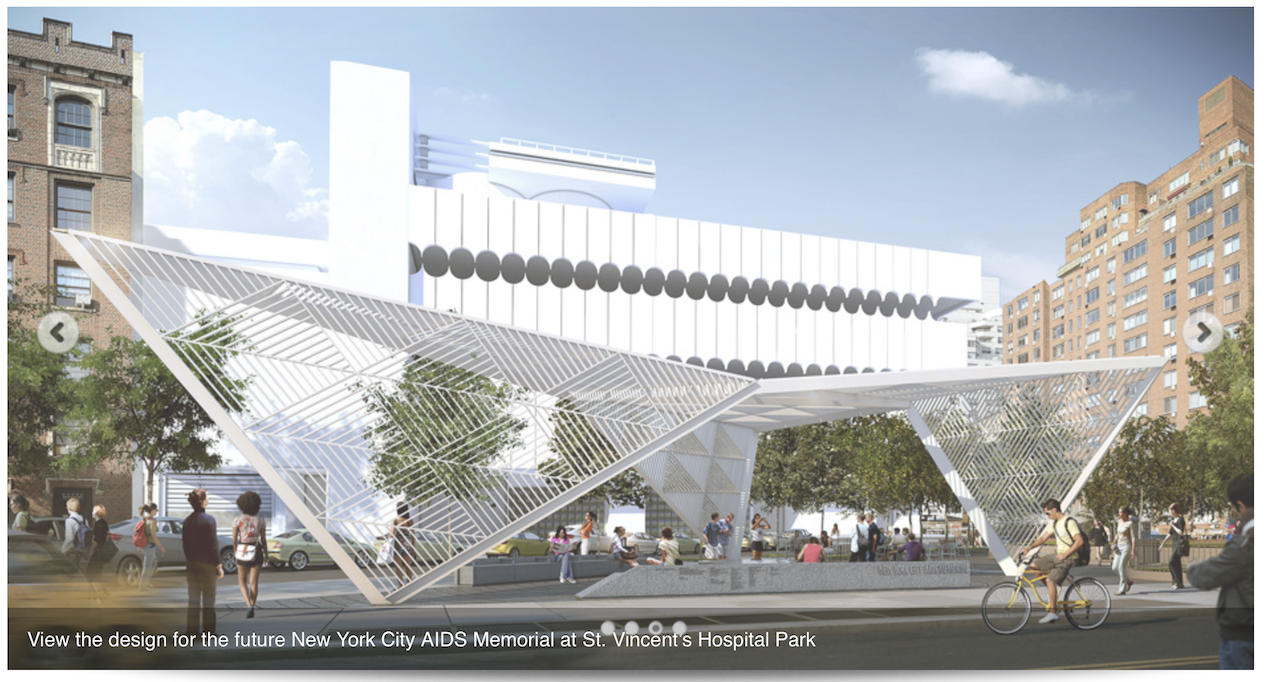
Supporting them in that effort were Councilmember Corey Johnson, Borough President Gale Brewer and state Senator Brad Hoylman. In early March, without notifying the community, the three local politicians wrote to Mayor Bill de Blasio and Mitchell Silver, the Parks Department commissioner, saying that it should be called The New York City AIDS Memorial Park. Period.
“As the elected officials representing the location of the new park at Seventh Ave. between 12th Street and Greenwich Avenue, we urge you to officially name it The New York City AIDS Memorial Park. No additional language is necessary,” the three politicians wrote.
“This Memorial will be of unparalleled significance to the people of New York City, the nation and the world. The Memorial does not just honor the over 100,000 New Yorkers who have died from the disease, but it marks where New Yorkers, from all creeds and walks of life, banded together, rose up and developed a cohesive community response to the H.I.V./AIDS epidemic that has revolutionized drug research and changed the course of public health and global development the world over. ….
“Putting any qualifiers in the name would diminish the significance of the Memorial,” the politicians stated. “However, along with the board of directors of the New York City AIDS Memorial, we would welcome signage in the park that acknowledges the historic role of St. Vincent’s Hospital, not only in the AIDS epidemic but with regard to many other health emergencies over the course of the 20th century.”
The letter — clearly, an end-around the Village community — soon came to light, however, and advocates for naming the park after St. Vincent’s were incensed. And so, the situation was riven.
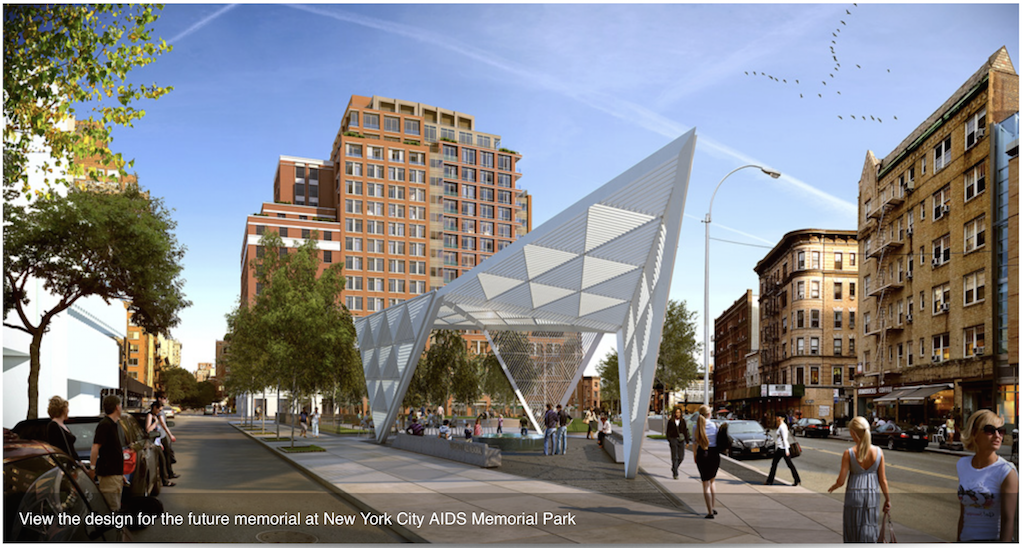
As The Villager was reporting on the disagreement this past week, a “compromise” was being worked out, a source very close to the issue who requested anonynmity told the newspaper. The situation had become incredibly fraught, he said with exasperation. Every imaginable H.I.V. / AIDS advocacy group was putting on a full-court press to call it AIDS Memorial Park only, but local advocates were pushing back, saying the name must prominently acknowledge St. Vincent’s, he said.
On Tuesday, the Parks Department shared with The Villager the name that, after much deliberation, finally had been decided upon. Not too surprisingly, it’s a mouthful: NYC AIDS Memorial Park at St. Vincent’s Triangle.
In a statement touting the much-mulled-over-multi-word moniker, Parks Commissioner Silver said, “NYC AIDS Memorial Park at St. Vincent’s Triangle stands at the crossroads of the richly historical West Village. Here, we honor and celebrate St. Vincent’s Hospital’s more than 150 years of service to our city, as well as the countless New Yorkers impacted by AIDS: those we have lost, those who live with H.I.V./AIDS, and those who continue to battle against fear and ignorance.”
The AIDS Memorial project is being led by two young urban planners, Christopher Tepper and Paul Kelterborn. On Tuesday, a few hours before Parks issued Silver’s statement, Tepper e-mailed the paper a response to a question on whether St. Vincent’s would be part of the park’s name.
“Over the past several months, the board of directors of The New York City AIDS Memorial organization, in consultation with dozens of AIDS and L.G.B.T organizations and other stakeholders, has engaged in discussions with the city administration regarding the naming of the park that will be home to a memorial which honors the more than 100,000 New Yorkers who perished in the epidemic, their caregivers and the courageous activists who fought for change,” Tepper said. “We are confident that the city will confer an appropriate name on the park which reflects the site’s imminent status as home to the most significant AIDS memorial in the world, and which is located at both the local epicenter of the disease and the community’s heroic response to it.
“The memorial’s steel canopy sculpture, which will serve as a gateway to the park, is nearly complete and will be shipped from Argentina, where it is being fabricated, next month. Installation in the park will begin in July and will be completed in the fall.”
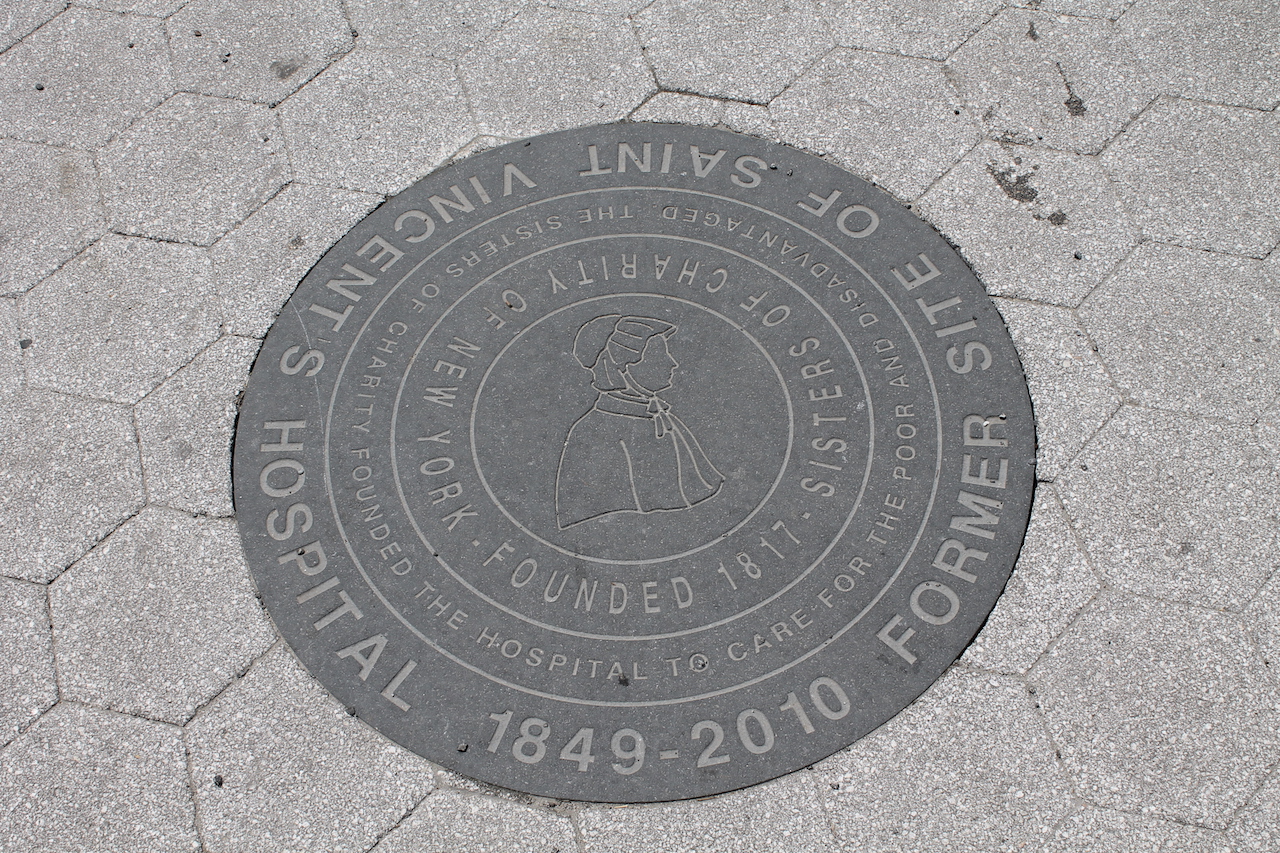
Initially, the AIDS Memorial group had hoped to take over the entire triangle park, as well as develop an underground space beneath it. Their preliminary design, presented in 2012, dubbed “Infinite Forest,” would have seen the triangle fenced in with mirrored walls and filled with a grove of birch trees. Yet, Rudin Management, which is developing the condo project on the former hospital site, had already designed a plan for the park that previously had been approved by the Department of City Planning and the Landmarks Preservation Commission, plus the borough president and Community Board 2.
At that time, Marilyn Dorato, president of the Greenwich Village Block Associations, blasted the AIDS Memorial group’s alternative design pitch as “presumptuous and dreadful.” Local residents wanted an open, sunny, upbeat park.
The AIDS Memorial group subsequently scaled back its claims on the park — yet more recently, as seen in the name flap, once again has tried to grab more influence over the space, critics charge.
Trevor Stewart, chairperson of Protect the Historic Village, has been one of the chief watchdogs on the park’s naming process. On Tuesday evening, told of the “compromise name,” he wasn’t very pleased.
“That sounds like a map location rather than a name,” he scoffed. “I think that’s a total fudge, and I don’t think it’s acceptable. Basically, they’re calling it AIDS Memorial Park and trying to locate it at St. Vincent’s Triangle. I think that the ‘St. Vincent’s’ part of it will just get dropped — that’s what they want. It’s confusion by design. This is like an inversion of what the community wants. The politicians kind of have been strongarmed into supporting a position that is not supported by the community.”
What most galls Stewart and others, however, is the AIDS Memorial group’s behind-the-scenes powerplay on the park’s name.
“I’m much more focused on the process than the name,” he said. “The community wants it be named for St. Vincent’s, and this group has come up in a very underhanded way and gotten it to be named what they want.”
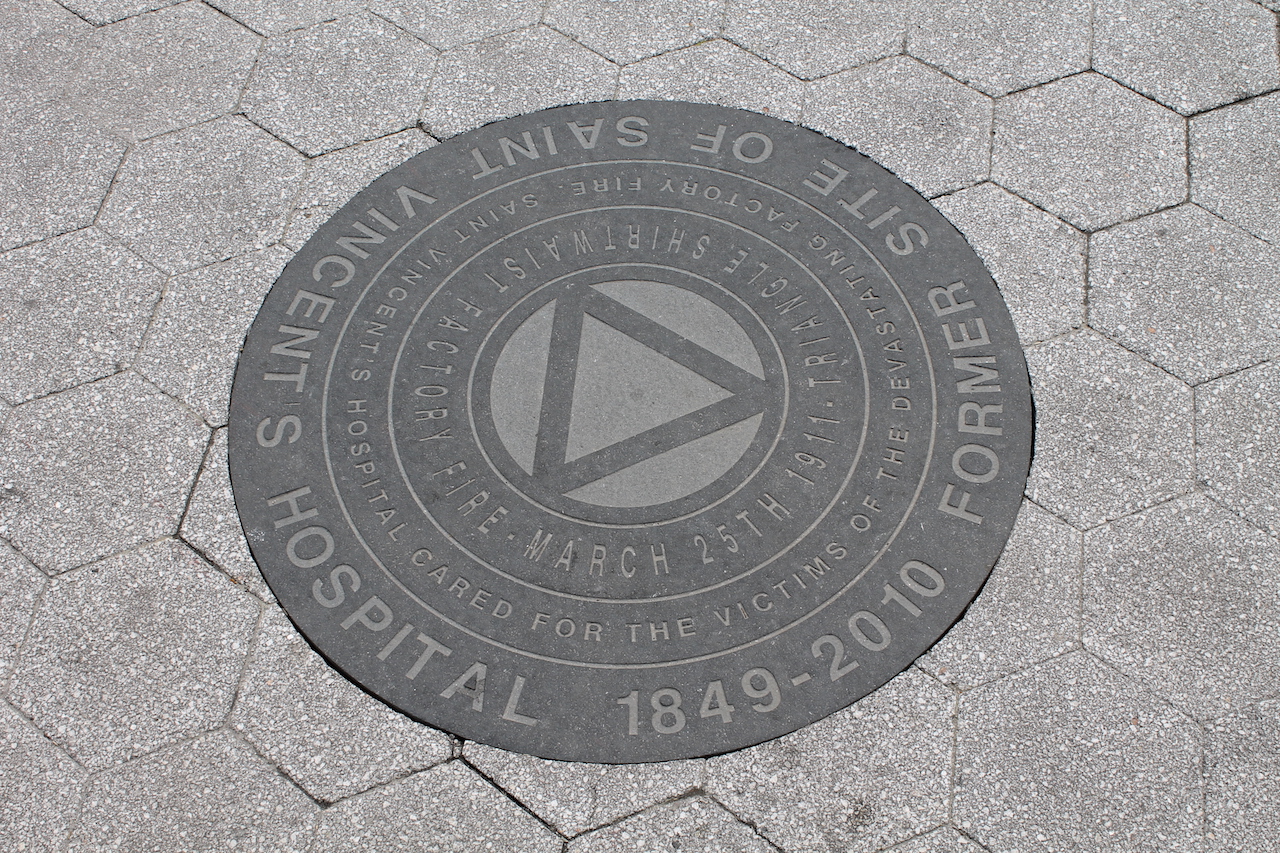
Stewart noted that, in fact, up until early April, the AIDS Memorial group’s Web site had shown renderings of the memorial structure with the caption, “View the design for the future New York City AIDS Memorial at St. Vincent’s Hospital Park.” However, he noted, on April 8, two days after he spoke to a representative in Johnson’s office, to voice his concerns about the AIDS Memorial group’s effort to sway the name, the Web site’s caption had changed, to “View the design for the future memorial at AIDS Memorial Park.”
“I thought that would happen,” Stewart said, “which is why I took screenshots.” He provided these to The Villager.
He was disappointed in Hoylman, in particular, for signing on to the secret letter to the mayor and Silver.
“A guy like Brad — Christ!,” Stewart fumed. “And he was the chairperson of the St. Vincent’s Omnibus Committee on Community Board 2. He sat through hundreds of hearings on the hospital. That’s what really got in my nose.
“I think what’s happening, and I understand it,” Stewart said, “the AIDS Memorial people see this as ground zero for world AIDS. They want something that’s exclusively named for AIDS. The Village sees it as — there’s actually a Village, and St. Vincent’s served it for 160 years.”
At the same time, he acknowledged, his group strongly supports the AIDS Memorial, and feels that the St. Vincent’s Triangle is the right spot, since it would “provide an appropriate historical and physical context for it.”
Stewart added of the AIDS Memorial group, “I’ve met them, they’re really nice guys.”
Asked for comment on the whole flap, Hoylman said, “St. Vincent’s Hospital and the AIDS crisis are inextricably linked in our community. I’m pleased that the Parks Department has chosen a name that honors this shared history.”
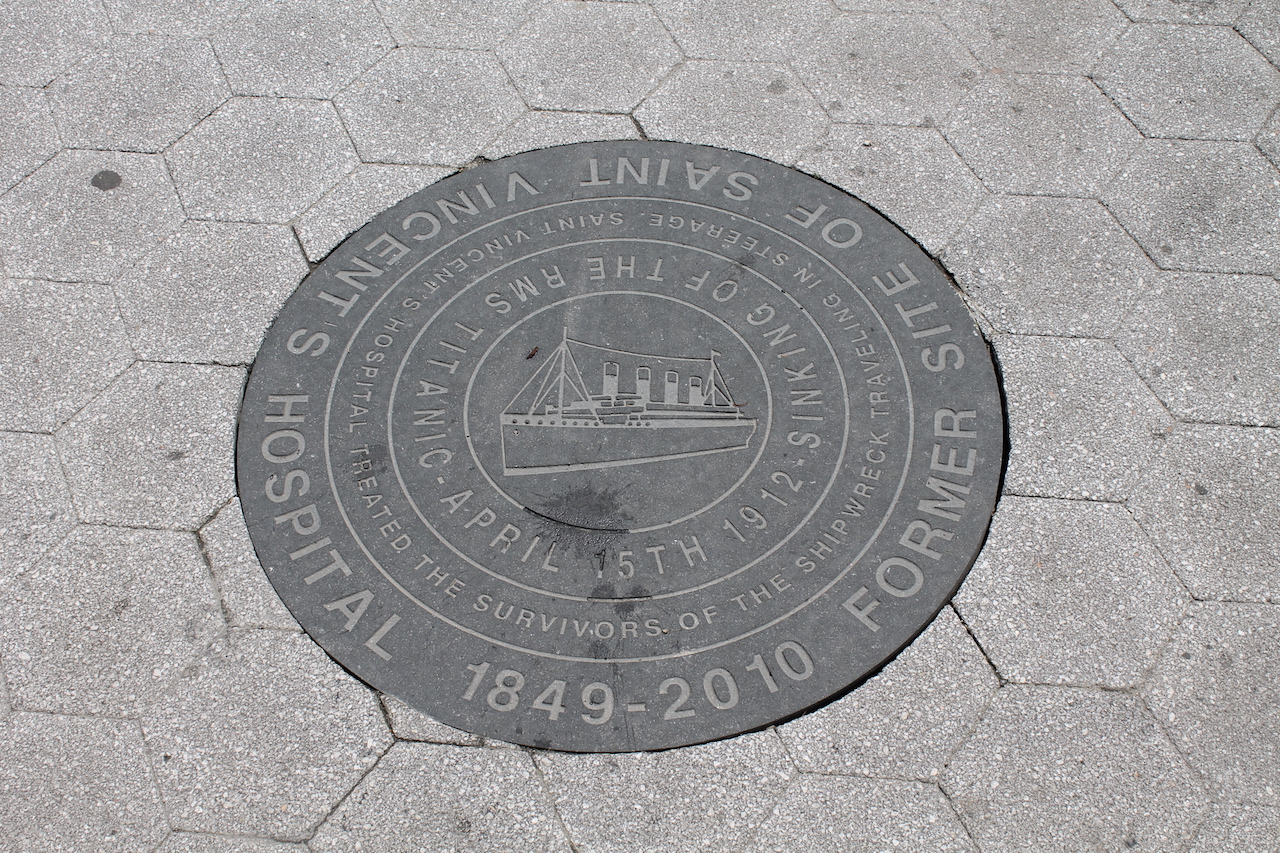
But former Councilmember Carol Greitzer, co-president of the W. 12th St. Block Association, called the park’s combo name “ridiculous.”
“Can you imagine putting it all on the sign?” she asked incredulously. “What is it — eight words? It sets a record.”
Greitzer said the park should be named for St. Vincent’s and that it isn’t even necessary to refer to the AIDS memorial in the name.
“It’s going to be an attractive little building,” she noted. “They can point to that. It will be a visible presence.
“When we did a survey on 12th St., people wanted the St. Vincent’s name in there in some way,” she said. “People weren’t opposed to having the AIDS memorial in there, but they wanted it to be St. Vincent’s Park.”
Assemblymember Deborah Glick notably did not sign on to the other politicians’ joint letter to the mayor and Parks commissioner advocating for the park to be named exclusively for the AIDS memorial.
Asked her thoughts on Monday, as the park’s name still had not been finalized, Glick responded, “I think open dialogue is always a positive thing. I have recently heard from two sides of the community, with differing opinions, and I believe a community meeting or a mediated discussion between these groups is essential before moving forward with any formal naming.”
However, on Tuesday, shortly before the combination name was released — after, again, first stressing the need for “open dialogue” — Glick said, “I am happy to hear that the input from both sides is being incorporated into the final name of this park.”
She added of the mini-greensward’s popularity, “As you can see on any nice day, the park is enjoyed by residents, tourists and passersby.”
Though Johnson previously lobbied the city to label the park solely for the AIDS memorial, last Friday, as things were coming to a riven head, Erik Bottcher, his chief of staff, indicated there had been a shift in Johnson’s position.
“Regarding the naming, we’ve been contacted by people on both sides of this issue who are equally passionate about their opinions,” Bottcher said. “Though it’s the Parks commissioner who names the parks, the councilmember is pushing for a name that honors both worthy causes.”
While Glick, at least earlier this week, had called for a community meeting on the issue, for its part, Community Board 2 has punted on the debate, apparently not wanting to wade into the stormy waters.
Speaking a week before Parks decided on the name, Tobi Bergman, C.B. 2 chairperson, said neither AIDS Memorial Park nor St. Vincent’s Triangle or Hospital Park sounded that great to him.
“None of the proposed names exactly rolls off the tongue. I’ve always wanted to have a park in the Village called Triangle Square,” he quipped. “Seriously, I think this should be worked out respectfully among those to whom it is important, and I am glad Corey Johnson is doing his best to find a solution everyone can support.”
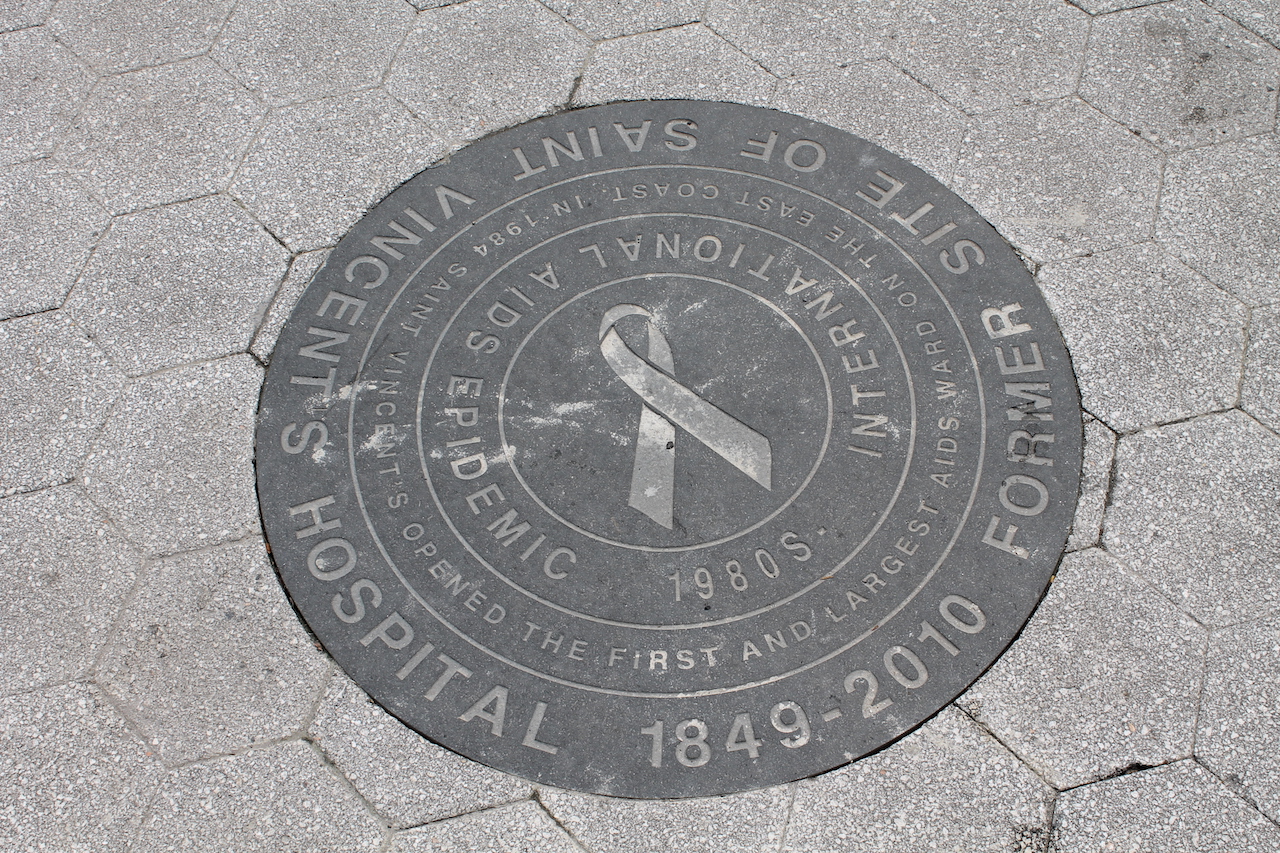
The Sisters of Charity of New York opened St. Vincent’s Hospital in 1849 in response to a major epidemic at that time — an outbreak of cholera sweeping the city that killed thousands. New York City’s first Catholic hospital, St. Vincent’s became the flagship of an expansive healthcare system run by the sisters. When St. Vincent’s closed in 2010, it was the city’s last remaining Catholic hospital.
In response to The Villager’s query, Elena Miranda, director of communications for the Sisters of Charity, forwarded a letter from Sister Jane Iannucelli, the order’s president, who was away at a meeting in Rome. Iannucelli was also vice chairperson of St. Vincent Catholic Medical Centers.
“Since its inception, the [St. Vincent’s Triangle] park was designated to recognize both the AIDS crisis and the contributions of St. Vincent’s Hospital to the people of Greenwich Village and the city of New York,” Iannucelli said, “and rightfully so, as both were absolutely integral to the fabric of the community.
“St. Vincent’s Hospital provided much-needed care for all in our beloved city, particularly the poor, from 1849 to 2010. Situated in the epicenter of the AIDS crisis, St. Vincent’s Hospital emerged as a leader in providing compassionate care when the mysterious disease was ravaging our neighbors. It is truly fitting and just that this park should be the site of the New York City AIDS Memorial. But to exclude St. Vincent’s Hospital — for 161 years an iconic institution of care for all in need in the city of New York — would be a great injustice to the community and to the entire city.
“As a native New Yorker, I strongly believe that the history of the city of New York is incomplete without recognizing the contributions of St. Vincent’s Hospital,” Iannucelli said.
“It is a legacy to be shared and celebrated by all New Yorkers, particularly the Greenwich Village community. St. Vincent’s Hospital Park is also a fitting tribute to all who cared for the people of our great city with kindness and compassion, as well as to those who were served. The original intention to provide a site for the AIDS Memorial and to recognize St. Vincent’s Hospital side by side on these hallowed grounds should most definitely be honored.”
Told of the new compromis name, Miranda said she spoke by phone about it with Iannucelli.
“The proposed name is acceptable to her but we would hope the signage acknowledges both equally,” she said. “We also believe that the Sisters of Charity of New York should be acknowledged in a form other than the medallion. Perhaps this can be accomplished by additional signage in the park or even a garden with signage. I think it is agreed that the medallion is not very visible.”
The current park does sport about half a dozen slate medallions embedded in its paving that refer to St. Vincent’s and various emergencies the hospital responded to, from taking in the Titanic’s survivors to the AIDS crisis and the 9/11 terror attack.
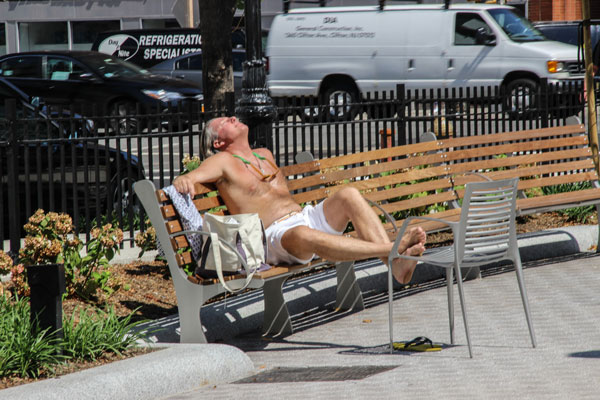
Rudin Management, which is developing The Greenwich Lane — 199-unit high-end residential condos on the former St. Vincent’s Hospital site — also built the new park, and will additionally construct the AIDS Memorial when the steel trellis arrives from Argentina. John Gilbert, Rudin’s executive vice president, said that in negotiations four years before Rudin closed the deal to buy the hospital campus, it promised to honor the memory of St. Vincent’s.
“We made a commitment to the Sisters of Charity 10 years ago in 2006, and we keep our commitments,” he said. “And we always felt the park’s name should have St. Vincent’s in it. The sisters said they want to leave a lasting legacy of St. Vincent’s Hospital — and if the hospital doesn’t get built, it’s the park.”
St. Vincent’s had planned to build a new hospital tower on its O’Toole Pavilion site, but the scheme fell through not long before the hospital closed under a ton of debt. That site is now occupied by the new Lenox Health Greenwich Village 24/7 emergency department and comprehensive-care center.
Rudin gave the O’Toole building free of charge to North Shore-L.I.J. Health System — recently renamed Northwell Health — plus $10 million to help the hospital chain create the stand-alone W. 12th St. Village E.D. Gilbert said the O’Toole property alone was worth about $40 million. Rudin’s cost to build the triangle park, all told, was $10 million, he said, and it will soon be given free of charge to the city.
“The park will be conveyed to the city as soon as the AIDS Memorial is finished,” Gilbert said.
“We’re happy that St. Vincent’s is in the park’s name,” Gilbert said, “and we’re very proud to be involved with the memorial.”
He noted that “throughout the public process, the ULURP and on maps, the triangle park was always called St. Vincent’s Triangle Park or St. Vincent’s Hospital Park.” But he admitted that’s not a lock, since ultimately it’s up to the Parks Department to decide on park names.
In addition, Rudin gave $1 million to be spread over 10 years to P.S. 41, P.S. 3 and the new P.S. 340 (at W. 16th and Sixth Ave., in the former Foundling Hospital building), for after-school programs, plus $1 million for local tenant legal services.
While there might still be some disagreement on the name, one thing everyone seems to concur on is that the little park is a huge success.
“I just got off the phone with someone concerned that two trees were taken out of the park,” Gilbert said on Tuesday afternoon. “The trees were dead. We’ll replace them.”

















